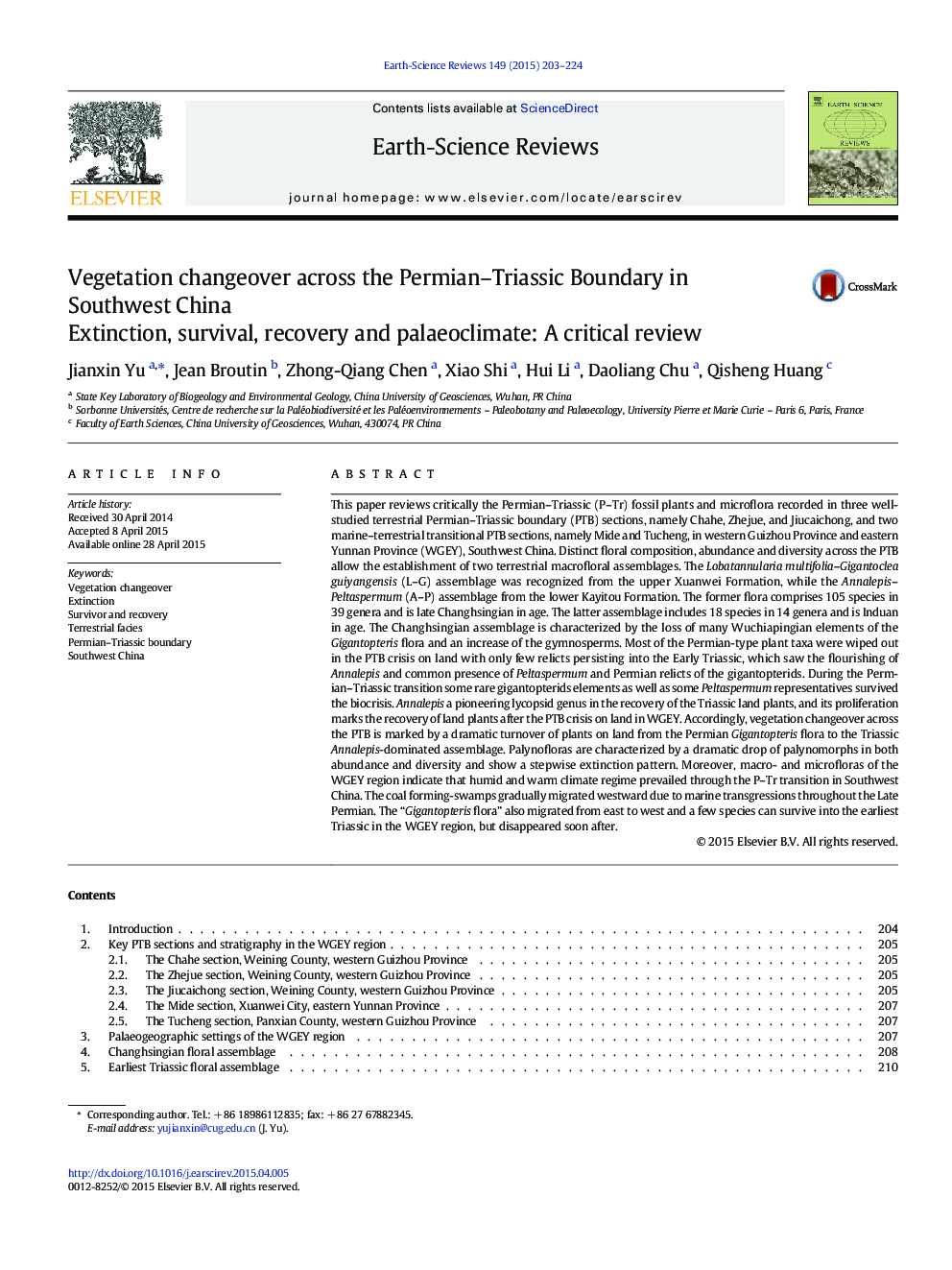| کد مقاله | کد نشریه | سال انتشار | مقاله انگلیسی | نسخه تمام متن |
|---|---|---|---|---|
| 4725698 | 1639953 | 2015 | 22 صفحه PDF | دانلود رایگان |
This paper reviews critically the Permian–Triassic (P–Tr) fossil plants and microflora recorded in three well-studied terrestrial Permian–Triassic boundary (PTB) sections, namely Chahe, Zhejue, and Jiucaichong, and two marine–terrestrial transitional PTB sections, namely Mide and Tucheng, in western Guizhou Province and eastern Yunnan Province (WGEY), Southwest China. Distinct floral composition, abundance and diversity across the PTB allow the establishment of two terrestrial macrofloral assemblages. The Lobatannularia multifolia–Gigantoclea guiyangensis (L–G) assemblage was recognized from the upper Xuanwei Formation, while the Annalepis–Peltaspermum (A–P) assemblage from the lower Kayitou Formation. The former flora comprises 105 species in 39 genera and is late Changhsingian in age. The latter assemblage includes 18 species in 14 genera and is Induan in age. The Changhsingian assemblage is characterized by the loss of many Wuchiapingian elements of the Gigantopteris flora and an increase of the gymnosperms. Most of the Permian-type plant taxa were wiped out in the PTB crisis on land with only few relicts persisting into the Early Triassic, which saw the flourishing of Annalepis and common presence of Peltaspermum and Permian relicts of the gigantopterids. During the Permian–Triassic transition some rare gigantopterids elements as well as some Peltaspermum representatives survived the biocrisis. Annalepis a pioneering lycopsid genus in the recovery of the Triassic land plants, and its proliferation marks the recovery of land plants after the PTB crisis on land in WGEY. Accordingly, vegetation changeover across the PTB is marked by a dramatic turnover of plants on land from the Permian Gigantopteris flora to the Triassic Annalepis-dominated assemblage. Palynofloras are characterized by a dramatic drop of palynomorphs in both abundance and diversity and show a stepwise extinction pattern. Moreover, macro- and microfloras of the WGEY region indicate that humid and warm climate regime prevailed through the P–Tr transition in Southwest China. The coal forming-swamps gradually migrated westward due to marine transgressions throughout the Late Permian. The “Gigantopteris flora” also migrated from east to west and a few species can survive into the earliest Triassic in the WGEY region, but disappeared soon after.
Journal: Earth-Science Reviews - Volume 149, October 2015, Pages 203–224
